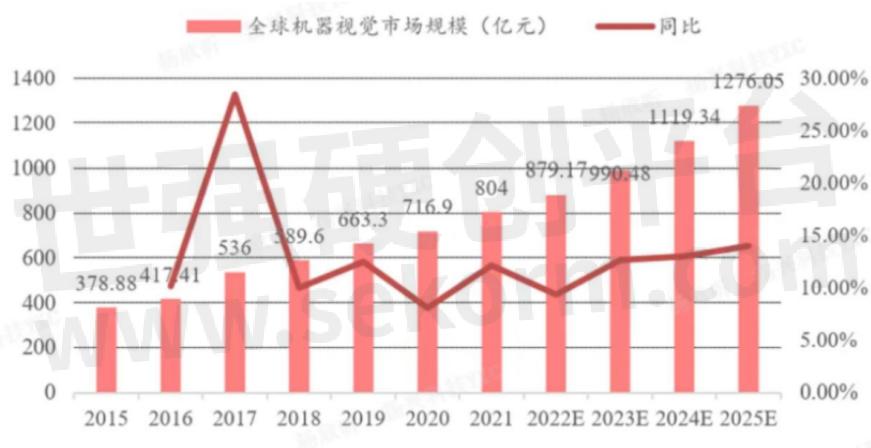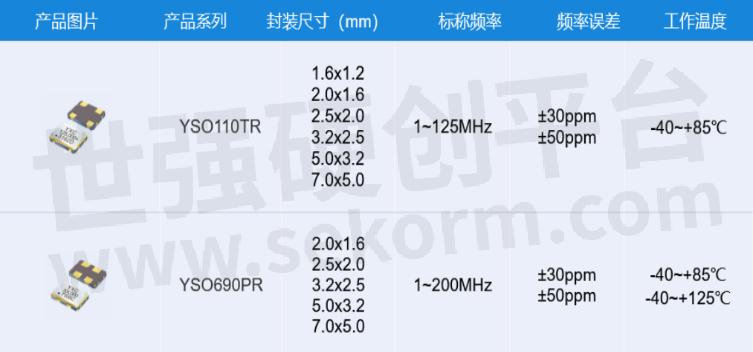YXC Crystal Oscillator Solutions Help Industrial Camera Applications




Industrial cameras are professional camera devices used in the field of industrial automation and machine vision. They can efficiently and accurately obtain images of target objects and cooperate with automation equipment to perform image processing and analysis. With the development of Industry 4.0 and intelligent manufacturing, the demand and market for industrial cameras are growing rapidly, especially in the fields of quality inspection, production line monitoring, automation control and machine vision.
1. Market Application and Trends
The main application areas of industrial cameras cover manufacturing, electronics, pharmaceutical, automobile manufacturing, logistics, etc. With the improvement of the automation level of various industries, it is showing a rapid growth trend.
According to market research, the industrial camera market has maintained rapid growth in recent years, especially in the Asia-Pacific region, where market demand is particularly strong. It is expected that by 2025, the global industrial camera market will reach billions of dollars. This growth is due to the following major trends:

2016-2025 Global Machine Vision Market Trend Chart
1. The promotion of intelligent manufacturing and Industry 4.0: The core of Industry 4.0 is intelligent manufacturing and automation, and machine vision, as a key technology, has greatly promoted the demand for industrial cameras.
2. Integration of artificial intelligence and big data: With the development of artificial intelligence and big data technology, industrial cameras are no longer limited to simple image acquisition, but are combined with deep learning, edge computing and other technologies to achieve real-time analysis and decision-making of complex image data.
3. High resolution and high speed: With the continuous improvement of the industry's requirements for precision and efficiency, the technical development of industrial cameras is also constantly upgrading. Cameras with high resolution (such as 8K and above) and high-speed imaging will become the mainstream in the future.
4. Diversified interfaces and communication protocols: With the popularization of industrial Internet of Things, industrial cameras that support multiple communication protocols (such as EtherCAT, Profinet, etc.) can be better integrated into the automation system, enhancing the fluidity of data and the synergy of the system.
In these application scenarios, industrial cameras require clock devices to have high precision and accuracy.
2. Application and Requirements of crystal oscillators in Industrial Cameras
In various modules of industrial cameras, crystal oscillators (crystal oscillators) play the role of providing precise clock signals, mainly to ensure that various parts of the system can operate synchronously and ensure the stability and correct processing of signals. Different modules have different requirements for parameters such as the frequency, accuracy, and temperature stability of crystal oscillators.

Schematic diagram of industrial camera operation process
3. YXC Crystal Oscillator Solution Helps Industrial Camera Application
Common frequency points of industrial cameras: 32.768KHz, 24MHZ, 25MHZ, 27MHZ, 40MHZ, 100MHZ, 125MHZ, 156.25MHZ
Based on the requirements of industrial cameras for clock devices, the following YXC crystal oscillator solutions are recommended:
· 32.768KHz resonator

Currently, the mainstream industrial camera solution uses a 32.768KHz resonator with a package size of 3.2*1.5
· MHz resonator

In industrial camera applications, MHz resonators mainly use 3225/2520 sizes, and some sensor applications have crystal oscillator miniaturization (2016) requirements

Industrial camera applications require oscillators with high precision and high stability. Some module designs may require the application of oscillators with special frequencies, which can be met through pre-programmed oscillators.

10GbE industrial cameras usually use higher frequencies such as 156.25MHz and have higher jitter requirements.
(YSO230LR jitter ≤ 0.1pS, which can meet the jitter requirements of oscillators for conventional industrial camera solutions)
- |
- +1 赞 0
- 收藏
- 评论 0
本文由三年不鸣转载自YXC Official Website,原文标题为:YXC crystal oscillator solutions help industrial camera applications,本站所有转载文章系出于传递更多信息之目的,且明确注明来源,不希望被转载的媒体或个人可与我们联系,我们将立即进行删除处理。
相关推荐
YXC Programmable Differential Crystal Oscillator YSO210PR Series, Frequency 155.52MHz, LVPECL Output, Used in Switches
A switch is a network device that is mainly used for forwarding electrical (optical) signals, allowing independent communication between any two network nodes connected to the switch.Switches are not limited to Ethernet applications, but also come in many forms such as telephone voice switches and fiber optic switches to meet different network needs.Switches require a stable clock signal to synchronize the transmission and processing of network data.
YXC晶振解决方案助力工业相机应用
工业相机常用频点:32.768KHz、24MHZ、25MHZ、27MHZ、40MHZ、100MHZ、125MHZ、156.25MHZ 工业要点:32.768KHz、24MHZ、25MHZ、27MHZ、40MHZ、100MHZ、125MHZ、156.25MHZ
【应用】扬兴晶振提供高精度晶振产品用于智能扫地机器人,常温频差±10ppm,有效降低EMI电磁干扰
晶振在智能扫地机器人中有着广泛的应用机会。扬兴晶振推荐YST310S系列表晶,标称频率为32.768kHz,拥有着轻薄的体积3.2*1.5mm,可支持±20ppm高频率精度;对高端的机型配置激光雷达模块,推荐系列无源晶振YSX321SL、YSX211SL。
【技术】扬兴晶振介绍晶振在光伏逆变器的应用
扬兴晶振介绍晶振在光伏逆变器的应用:光伏成为新能源赛道的重要一员后,逆变器就成了市场关注的细分赛道之一。逆变器,这个听名字就很高端设备,其作用是把直流电(比如电池、蓄电瓶等),转变成定频定压或交流电(如常用的220V交流电),是太阳能光伏发电系统的心脏。
What are the Common Cutting Processes for Crystal Oscillators
The more common cutting types of crystal oscillators are briefly introduced in three types: AT, BT, and SC cutting.
YXC automotive grade resonator 8MHz, Passive Crystal Oscillator 3225 Package for Car Bluetooth Module
Bluetooth module is a PCBA board with integrated Bluetooth function, which is used for short-distance wireless communication. It is divided into Bluetooth data module and Bluetooth voice module according to its function. Bluetooth module refers to a collection of basic circuits of chips with integrated Bluetooth function, which is used for wireless network communication.
Introduction of the Crystal Resonator Structure
This article is an introduction to the crystal resonator structure. The crystal in the crystal resonator refers to quartz crystal, and its chemical formula is silicon dioxide SiO2.
There are Two Main Types of Crystal Oscillators: Active Crystal Oscillators and Passive Crystal Oscillators
Self-oscillation characteristics of active crystal oscillators and usage requirements of passive crystal oscillators. The content involves the internal structure of crystal oscillators, especially the piezoelectric effect of quartz crystals and their role in mechanical vibration.
Tips for Crystal Oscillator Circuit Design, Essential Skills for Engineers!
As an indispensable signal transmitter in the clock circuit, the crystal oscillator is required for the microcontroller to operate normally. Therefore, the participation of the crystal oscillator is also indispensable in the design of electronic circuits. A good crystal oscillator circuit design can provide the best space utilization for electronics and play the greatest functional role.
YXC 16MHz Automotive-grade Resonator YSX321SC, 3225-4P Package, Operating Temperature -40~125℃, Used in Vehicle HUD
the HUD system displays relevant driving information, such as vehicle speed, navigation instructions, warnings, etc., directly on a transparent display panel in front of the driver‘s field of vision by mapping images or information. The clock signal of the crystal oscillator is used to control image generation and update, ensuring that the image is updated within a sustained time interval and maintaining the real-time and continuity of information.
Does a Passive Crystal Oscillator Have a Direction?
A passive crystal oscillator has no direction, and the pins of a passive crystal oscillator do not distinguish between positive and negative poles.
YXC 24MHz Car-standard resonator, Load 8PF, Operating Temperature -40~125℃, Used in Body Domain Control-TMCU Geely
The body domain controller is one of the key components of modern automotive electronic systems. It is an intelligent control unit that can centrally control various electronic modules and systems of the body. Its main function is to process and manage information from body electronic modules and coordinate communication and data transmission between various modules to achieve unified management and control of the body system.
电子商城
现货市场







































































































































































































登录 | 立即注册
提交评论